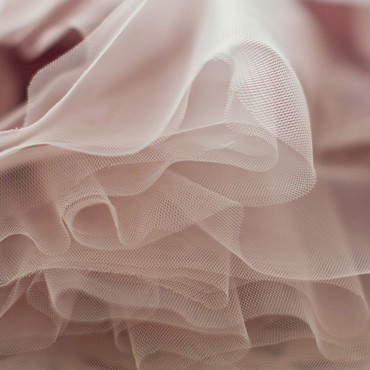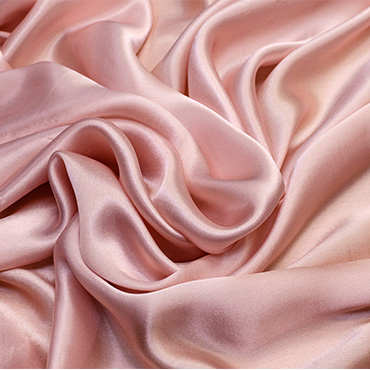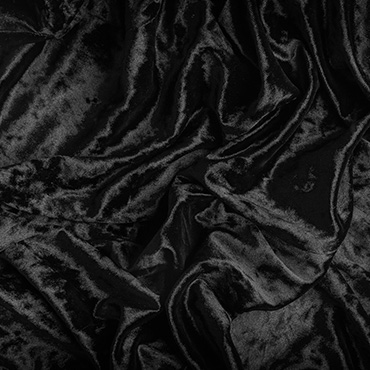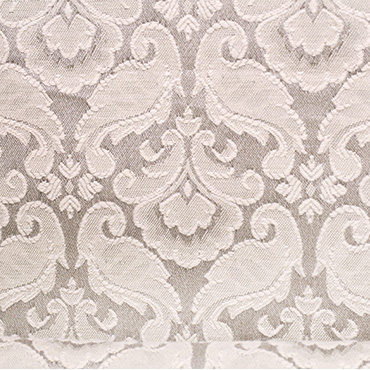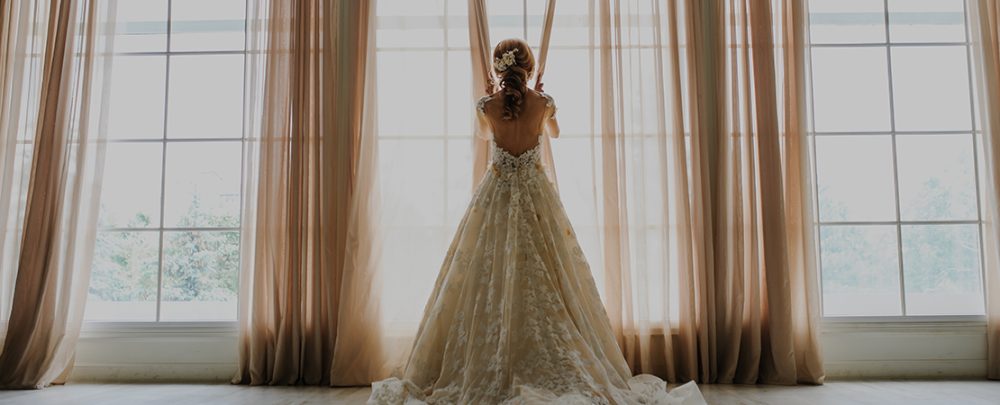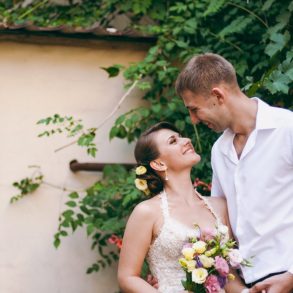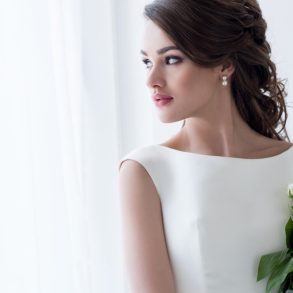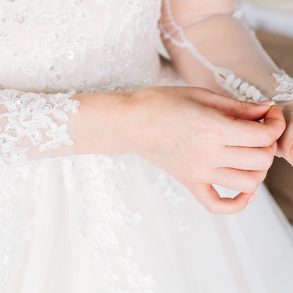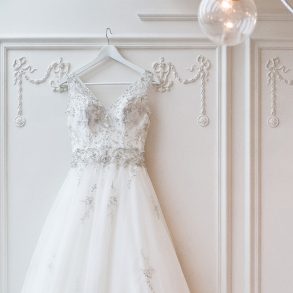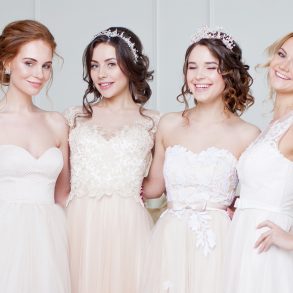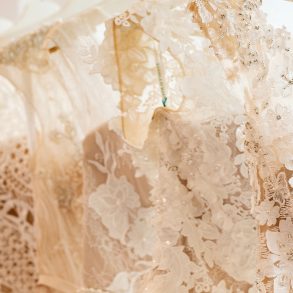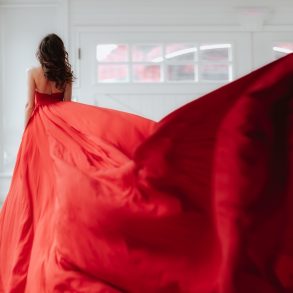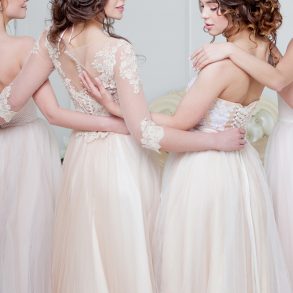Most of us don’t spend a whole lot of time thinking about the fabrics we wear. But for your wedding day – probably the most photographed day of your life – fabrics are worth consideration.
You want your wedding dress to be made of something that’s flattering, comfortable, and true to your vision. But, unless you’ve worked in the fashion industry, a lot of terms for wedding dress fabrics may be completely foreign to you.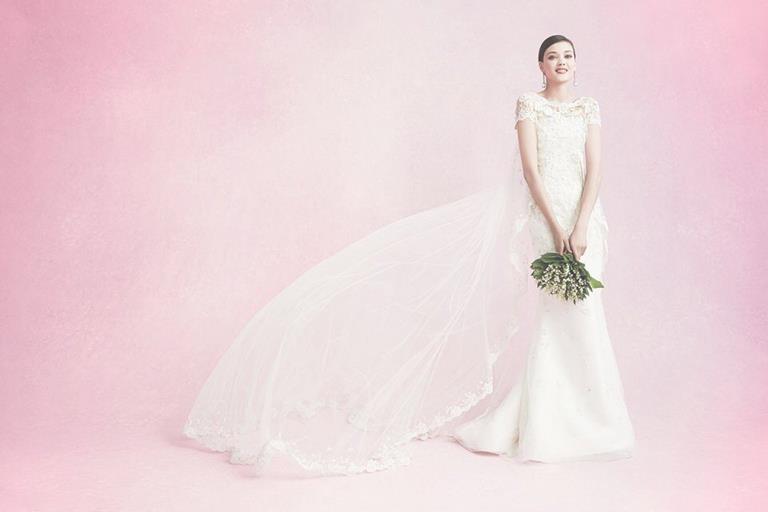
Let’s discuss some of the most popular wedding dress fabrics and the characteristics that make each one unique.
Sheer Fabrics
Sheer fabrics are typically used as the outer layer of a gown or for finer details like sleeves. Layers of sheer fabrics can create a mystical dream-like look that’s perfect for a romantic fairytale-themed wedding.
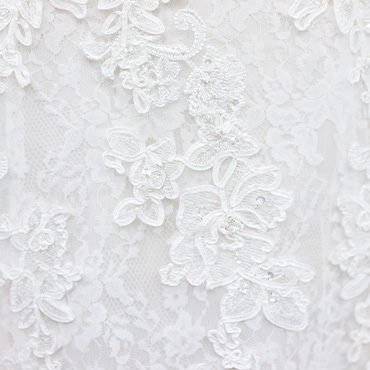
Lace
Lace is a particular type of netting that features designs or images woven into the fabric. There are several different types of lace, some of which are lighter, some of which are heavier. But generally speaking, lace is associated with more feminine aesthetics regardless of the type of lace.
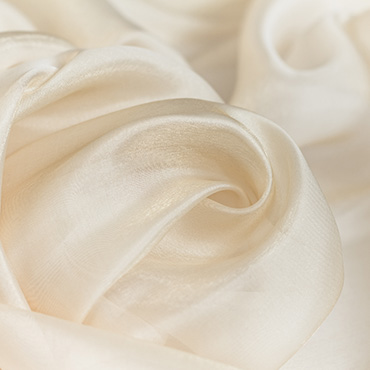
Chiffon
Chiffon is a soft, flowy fabric that is either translucent or fully sheer. This type of material is extremely light and can almost seem to float on the most gentle breeze. Chiffon looks beautiful with sheath and A-line silhouettes.
Light Fabrics
Lightweight fabrics are perfect for spring or summer weddings. While they may not offer a lot of warmth, they often provide a beautiful simplicity that is well-suited to casual settings like beaches and gardens.
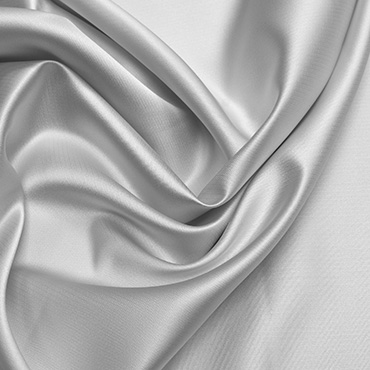
Crepe
Crepe fabric is a lightweight textured material. The subtle crinkle or grained surface of the fabric gives it a unique matte finish. Crepe is somewhat unique in its versatility; it can look very formal or very casual.
Heavy Fabrics
Heavy fabrics tend to be the most formal. They are rich, luxurious, and look right at home in a regal cathedral. On top of their sumptuous looks, these fabrics are also warmer, making them a good option for winter or fall weddings.
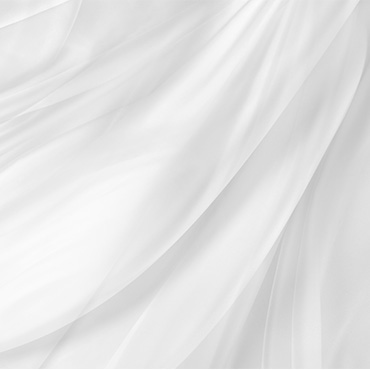
Satin
There are many types of satin fabrics in the world, but bridal statins tend to be quite heavy with a shine that isn’t quite as glossy as charmeuse. Satin is perhaps the most versatile fabric for wedding gowns, as it can work splendidly for every silhouette and fits into virtually any setting.
Velvet
Velvet is a type of fabric that features very small individual fibers sticking out from the material in what’s called a pile. The pile makes velvet feel soft and plush. Velvet is quite a warm and weighty fabric, but with the right structural garments, it could make an excellent ball gown or a very flattering trumpet gown.
Jacquard
Jacquard fabrics are patterned. But rather than the pattern being printed or stamped onto the material, it is woven directly into the fabric like a tapestry. Jacquards can be vibrant and colorful, or they can be more subtle, using fibers in various shades of the same color to create an intricate yet unobtrusive pattern.
Start With Silhouette & Go From There
The fabric options for wedding gowns are virtually endless. Rather than choosing the type of fabric or finish you want for your gown first, start by deciding what silhouette you would like. From there, you can choose your preferred fabric based on which materials work best with your desired silhouette.
Remember, it’s your day. As long as you feel comfortable, beautiful, and in love, nothing else really matters.


